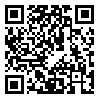Articles accepted at the time of publication
Back to the articles list |
Back to browse issues page
1- Department of English Language and Linguistics, Humanities Faculty, Kermanshah branch, Islamic Azad University, Kermanshah, Iran
2- Department of English and Linguistics, Faculty of Language and Literature, University of Kurdistan ,dehghan_m85@yahoo.com
2- Department of English and Linguistics, Faculty of Language and Literature, University of Kurdistan ,
Abstract: (2999 Views)
The issue of polysemy has been considered within cognitive approach by Iranian linguists in recent years. That’s because the authors have analyzed the simple form of the verb /čijən/ (i.e., going) in kalhori /kermanshaian Kurdish based on principled–polysemy approach proposed by Evans & Green in 2006. In this qualitative study, the data were collected through Kurdish speakers’ daily conversation and analyzed based on the mentioned approach in a descriptive-analytic way. Also, the authors used Kurdish speakers and their own linguistic intuition to approve the authenticity of the data. The results showed that the prototypical meaning of this verb was “GO” that has forty-five distinct meanings, such as “travel”, “drive”, “migrate”, “flow”, “set”, “finish”, “charge”, “send'', etc. in its own semantic clusters including six distinct semantic clusters. Finally, these forty-five distinct meanings along with their six semantic clusters were illustrated in a semantic network. Also, the findings showed that a favorable explanation of the polysemy of this verb in Kalhori Kurdish can be obtained based on the mentioned approach. The polysemy representation of this verb in Kalhori Kurdish can be useful for a better understanding of the polysemy of other verbs in Kurdish.
Article Type: مقالات علمی پژوهشی |
Subject:
Semantics
Send email to the article author
| Rights and permissions | |
 |
This work is licensed under a Creative Commons Attribution-NonCommercial 4.0 International License. |








